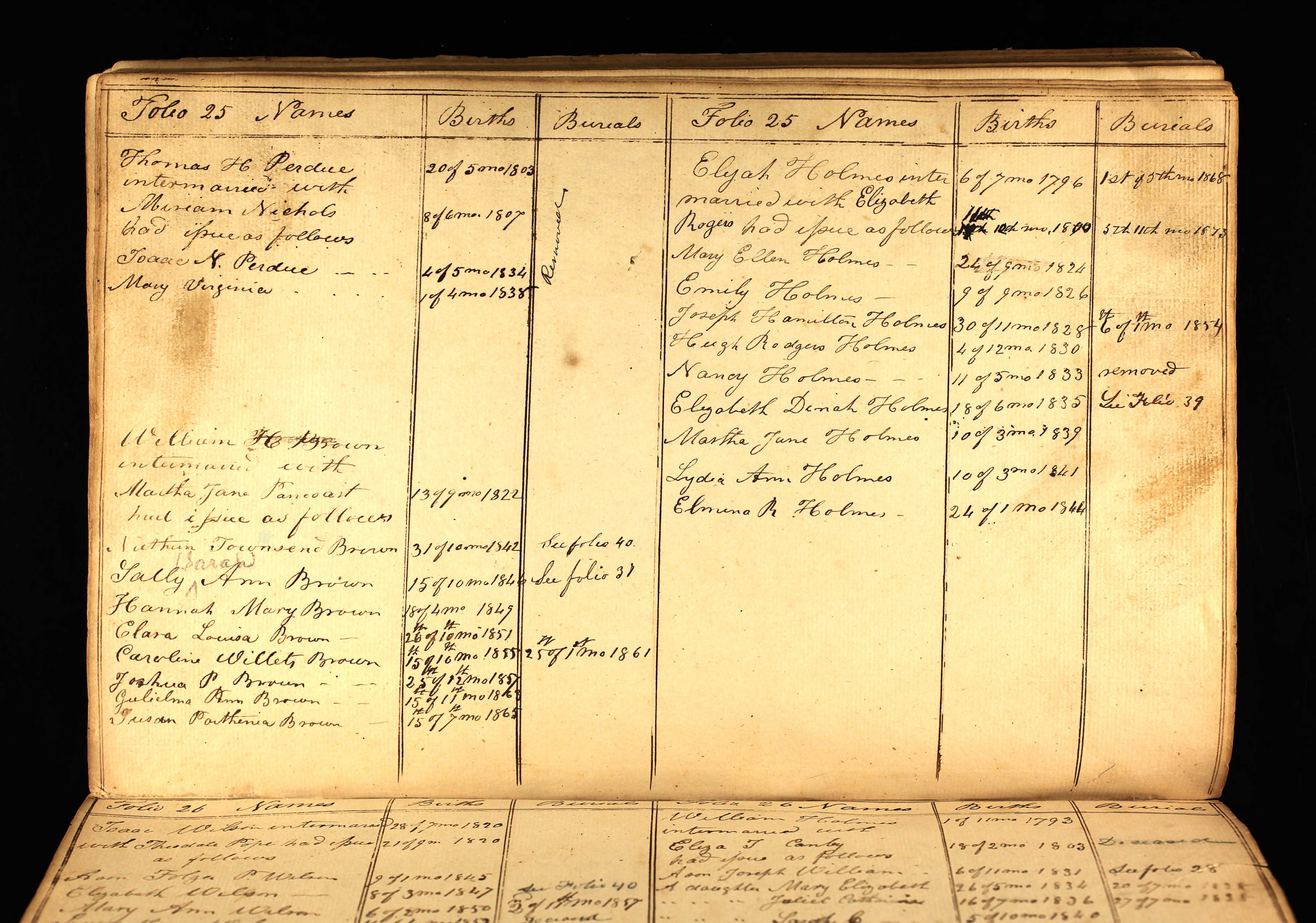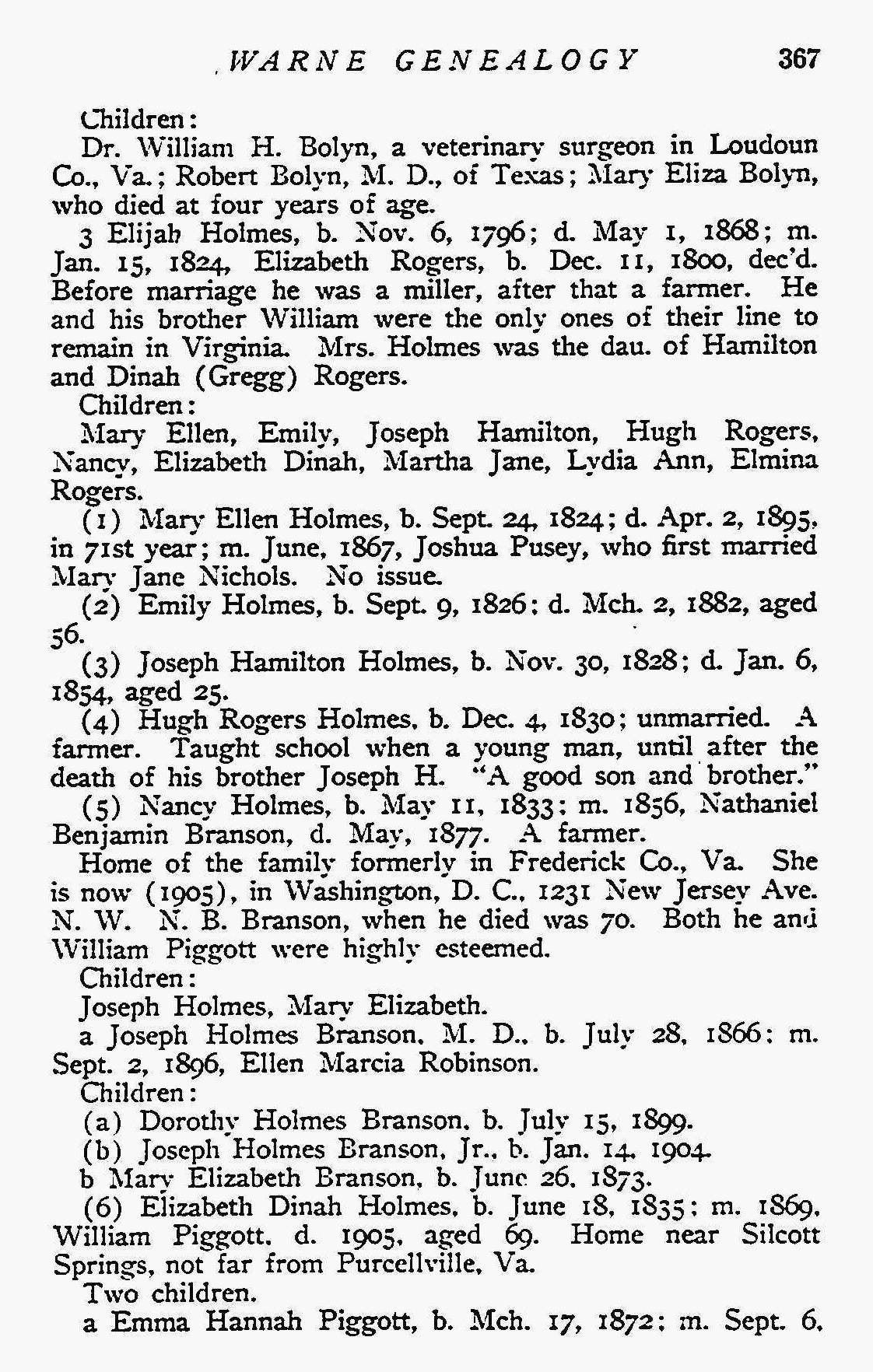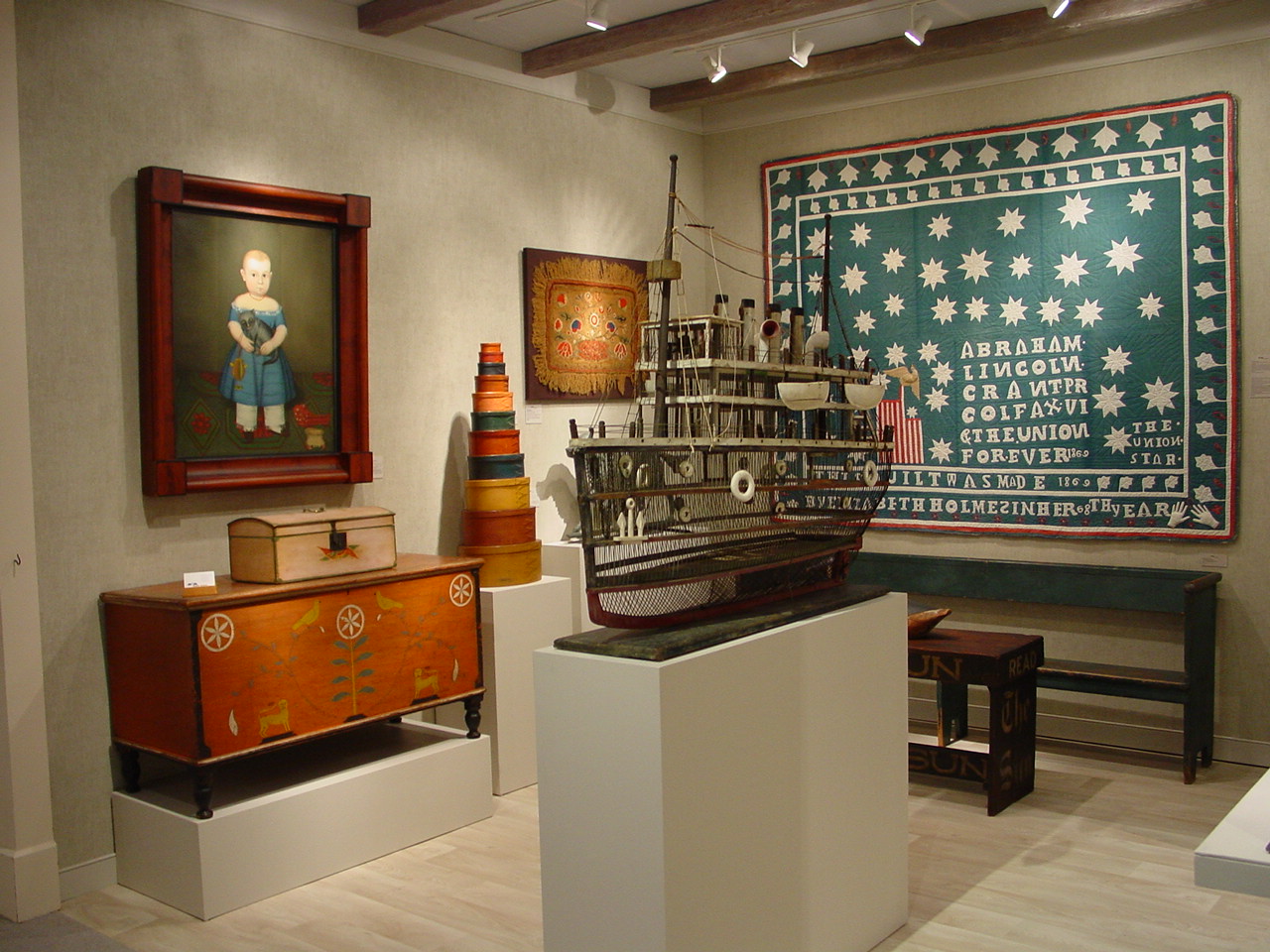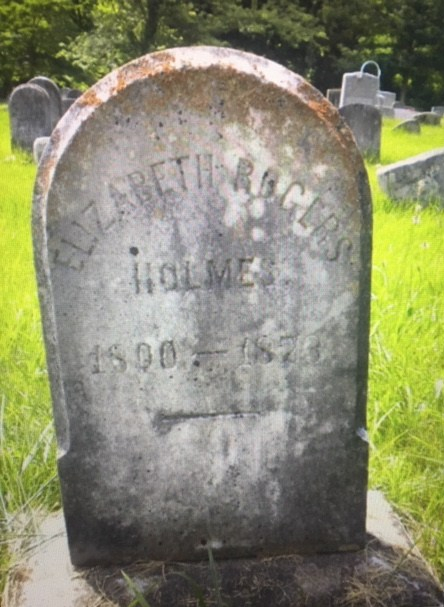
Courtesy of Olde Hope Antiques, Solebury, Pennsylvania
The quilt shown above is called “The Union Star” by textile historians and collectors. It was designed and worked by Elizabeth Rogers Holmes. The quilt not only reveals Holmes’ politcal opinions but shows she wanted to forcefully express herself in a permanent form, in a way meant to be seen and displayed. The stitch work would have taken months of determined labor, and gives us one more reason to rethink the out-dated notion that respectable women of the 19th century were necessarily quiet and passive. This quilt practically shouts with joy!
Elizabeth Rogers Holmes (1800-1873) was a daughter of Hamilton and Dinah Gregg Rogers, a properous farming family. Elizabeth met and married Quaker Elijah Holmes and they had seven daughters and two sons, as shown in the Goose Creek Meeting Folio of marriages, births and burials:

A useful page giving background for Elizabeth and her family is found in a genealogy book that includes a Holmes page shown below, beginning second sentence from top of page. The Holmes’ oldest son, Joseph Hamilton Holmes, died in 1854 at age 25.

By George Warne Labaw
The Holmes farm was outside the little community of Hamilton, a few miles from Lincoln.
We know less about Elizabeth than about her husband Elijah, for whom there are occasional public records. Elijah Holmes was active in helping former enslaved woman Kitty Payne and her children after the young family’s July 1845 kidnapping from Pennsylvania, where they lived as free blacks. Elijah Holmes was one of the three Quakers who went to Rappahannock county where Kitty and her children were languishing in jail. A violent scene developed, and the Quaker men were fortunate to escape with their lives. The incident is recounted here, along with primary source material. It surely was a traumatic event in the Holmes household, but one that ultimately ended with success. However, typical of the times, Elizabeth Rogers Holmes doesn’t appear in public records until a brief notice of her death in 1873. Nor do we have a picture of her to share. Perhaps one will turn up?
Other than her statement stitched on the quilt, how can we know Elizabeth Rogers Holmes felt as strongly as her husband Elijah about the cause of freedom? There are strong implications from the fact that at least one of her children, Hugh Rogers Holmes (1830-1914) was openly abolitionist; according to the editorial written in April 1856 in the Loudoun Mirror: “…As Trayhern took his seat, he was hissed by a Black Republican by the name of Hugh Holmes.” More information on the event for which Hugh Holmes is maligned is written about in the Nest of Abolitionists page “Goose Creek “Black Republican” Literary Society Meeting.
Elizabeth Holmes took a routine occupation, quilt making, and turned it into a political statement. Her pattern is quirky and quixotic; it possibly tells us something about her own personality. The feelings she expressed, though accepted in her Quaker community, were highly controversial in the state of Virginia, on the losing side of a devastating war.
The quilt was kept in excellent condition, and eventually passed out of the Holmes family. It went into the arts realm, purchased by textile dealers and collectors, ending up on the walls of wealthy homes, far away from its origins in the Digges Valley Road farmhouse. The Holmes quilt came into the possession of an antiques and folk art business which displayed it in 2018 at various trade shows.

The Olde Hope Antiques website writes about the quilt as follows: “The Union Star”: A Rare and Important Quilt This early and historic quilt features 39 stars, an American flag with dove, and the inscription “Abraham. Lincoln. Grant. PR [President] Colfax VI [Vice-President] & The Union Forever 1869/ This Quilt was Made 1869 By Elizabeth Holmes in Her 68th Year” – the stuffed work hands signifying the maker.Elizabeth Rogers Holmes (1800-1873) was a Quaker and member of the Goose Creek Friends Meeting in Lincoln, Loudoun County, Virginia. Provenance: Kinnaman and Ramaekers, Bridgehampton, NY; Kelter-Malce Antiques, New York City; Collection of Bill and Maggie Pearson; America Hurrah, New York City; Private New York Collection Literature: Hedges, Ferrero and Silber, Hearts and Hands: Women, Quilts, and American Society (1996), fig. 10; Harding, Stars and Stripes: Patriotic Motifs in American Folk Art (2002), pp. 124-125; William Beebe (2016), Intimate Parallels: The Art, History, and Activism of Civil War-Era Women’s Quilt Art, Master’s Thesis, Harvard Extension School.
~~~~~~~~~~~~~~~~~~~~~~~~~~~~~~~
Elizabeth, called ‘Betsy’ on the 1850 census, lived her entire life in Loudoun County and stayed active in her Quaker faith. She died in 1873 of ‘consumption’ according to the Loudoun County death registry and was buried at the Goose Creek burial ground, alongside her husband and other family members.

It would be satisfying to know more about Elizabeth Rogers Holmes. Perhaps someone has a picture of her they could add to this site, and also might be able to fill in some of the gaps about her remarkable life.